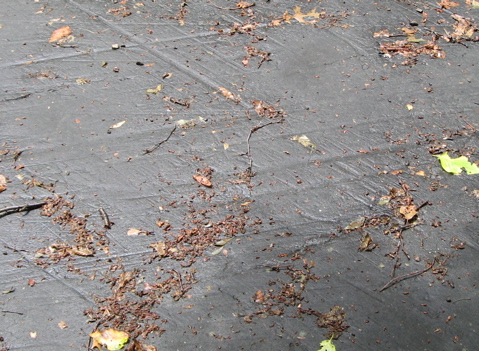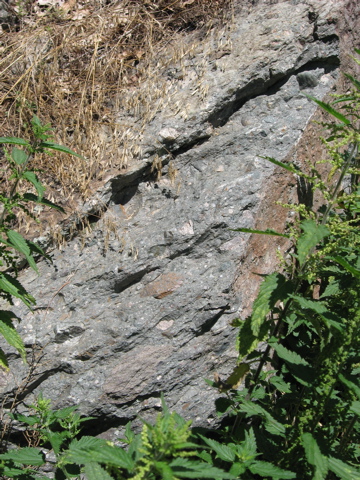Teacher Notes in Yellow
Here in Massachusetts, glaciers have been a major force in altering the landscape. Most students are probably familiar with the fact that there was an ice age here around 14,000 or so years ago, but what most students do not realize is that there have been many ice ages throughout Earth's history.
The first part of this "field trip" shows evidence of recent glaciation - the drumlins of Peters Hill and other hills in the Arboretum. There are many, many sites in the Boston area to see good evidence of the recent ice age. For example: Boston Harbor Islands, Weymouth, Hull, and just about any hill or pond in the area! What we try to do in the Arboretum site is to bring up evidence of much more ancient glaciation through the Squantum Tillite. While there is apparently considerable debate as to the exact process and age of these rocks, it seems that most agree that it is formed from glacial origins. There seems to be dispute about the age of the rocks, but we can be sure that it is at least 275 million years old, and perhaps as old as 500 million years old. This uncertainty could be used as a starting point for discussion about the methods used to date rocks like this, and about the nature of science, where debate (with evidence) is welcomed.
An interesting question about the formation of the tillite is whether it was formed from giant ice sheets when Avalonia was near the South Pole, or from high-altitude mountain glaciers, which existed during the Alleghanian Orogeny, when the Boston Area was near the Equator.
The Arnold Arboretum shows lots of evidence of glaciation - the process by which glaciers alter the landscape. What's interesting about this location is that you can see evicence of relatively recent glaciers (~12,000 years ago) and very ancient glaciers (~600 million years ago).
The Arboretum has several hills, of which Peters Hill (on the south side of the park) is the largest. These hills are drumlins. A drumlin is a hill composed of a pile of sand, rocks, gravel, boulders, etc. that have were left behind as glaciers retreated over 12,000 years ago.
Not too far away, at the Chestnut Hill Mall (behind Bloomingdale's), you can see more evidence of the glaciers retreating. They left behind clear scratches in the rock as they slowly moved North.

Not all glacial till comes from large continent-covering glaciers (such as those that occured during the Ice Age). On the tops of many mountains glaciers can be found, and they can produce the same effects as larger glaciers.
Look closely at the pictures of the rock below. These are formed in a similar way to the Roxbury Conglomerate, in that bits of rock, sand and clay were deposited at the bottom of a shallow waterway - over time these became cemented toegether to form a hard rock.
However, the bits of rock that make up the Conglomerate found in the Arboretum may have been formed differently - these bits of rock were probably eroded by glaciers, rather than water and wind. This type of conglomerate is called a tillite, and the specific rock found in the Arboretum is known as Squantum Tillite.
One telltale feature of the tillite is the fact that the bits of rock found in the conglomerate tend to be more jagged, as compared to the rounded stones found in the Roxbury Conglomerate.
<pictures of Tillite and Conglomerate>
Some scientists believe that the tillite was formed by glaciers, yet the Boston area was near the equator when the tillite was formed. What does that tell you about the environment in which the tillite was formed?

